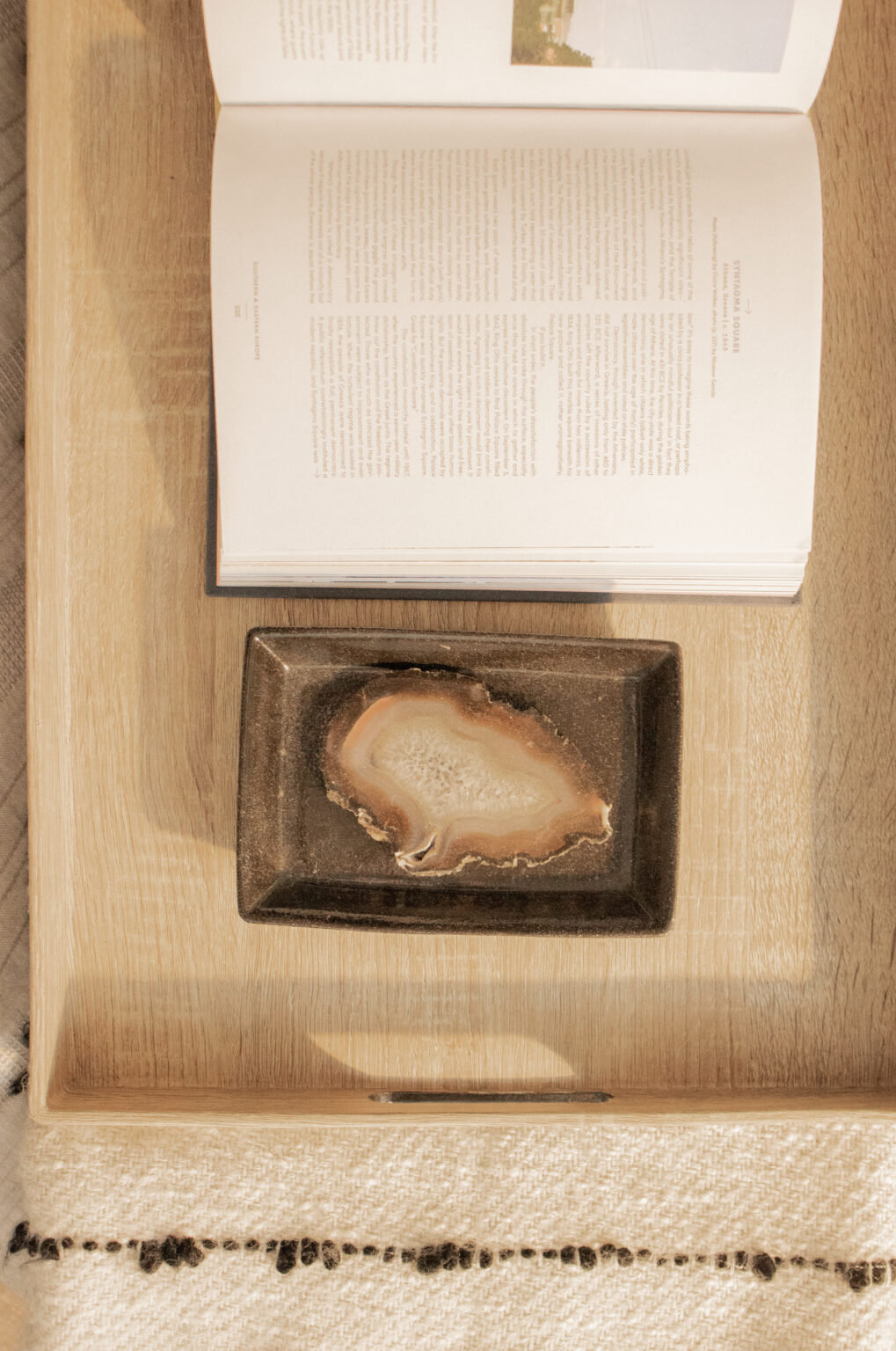Getting people on your list is great, but the real magic happens when you start sending them an email sequence, which should not only deliver value, but gradually move them toward the next conversion event or milestone.
Whether you have a list already or you’re building out your first funnel, here’s what you need to know about writing an evergreen email sequence that warms and nurtures subscribers — and keeps them excited to see you land in their inbox!
What is an email sequence?
An email sequence is a series of emails delivered on a pre-determined schedule. For instance, most “welcome sequences” consist of about 5 emails delivered over the course of a 5-7 days to new subscribers.
Using a welcome sequence can help you significantly improve subscriber retention and promote more conversions. Plus, it allows you to quickly segment subscribers based on whether or not they’re engaging with what you’re sending to them.
In other words, an email sequence serves both as a way to improve the user experience and unlock valuable insights into how excited subscribers are to be on your list. Because, let’s face it: Some people sign up but will never open an email.
Among other things, a sequence can help you pick out “inactive” users early so you can either re-engage them or take them off your list before they send you to spam and harm your deliverability.
Why is an email sequence needed?
Easily one of the greatest strengths of an email sequence is that it keeps you top of mind during the crucial days following an important user action (think subscribing to your email list, making a purchase, or booking a consultation).
Without a sequence, you risk losing crucial momentum.
Due to their evergreen nature, an email sequence only needs to be written once and can work for you 24/7, going out to users automatically as their actions trigger a sequence. It’s a super powerful marketing tool that will:
- Keep users thinking about you and your offer
- Offer immediate value that encourages trust
- Nurture users along the path to another important action
- Improve user engagement and satisfaction
How to Use An Email Sequence
You can easily come up with a dozen email sequences, each tailored around a different user action. Here are some examples of effective email sequences based on common events.
When a Subscriber Joins Your List
If your opt-in page does its job well, new subscribers will be super ecstatic to start receiving your newsletter — but they may have to wait a week or more before your next edition goes out. A welcome sequence enables you to deliver immediate value in the meantime.
Most welcome sequences consist of 5+ emails and typically include a:
- Thank you email: Deliver any freebie or incentive you promised on your opt-in page. Send this message as soon as someone joins your list.
- Icebreaker email: Give a warm introduction to your story and mission. Send it within an hour or two of your “thank you” email.
- Orientation email: Outline what they can expect from your list (email frequency, content themes, etc.). Send it the day after they join.
- Bonus value email: Give them a high-value bonus they didn’t expect, like a free template, to give them a sneak peek at the subscriber experience. Send it three or four days after they subscribe.
- Invitation email: Test the waters and ask subscribers to take another step. This could be purchasing your mini offer or booking a consultation. Send it within 24 hours after they open your bonus value email.
- Get The "Welcome Sequence Swipe File"
When a Consultation Is Scheduled
It’s huge let-down when you get ready for a Zoom call just for your lead to end up missing their appointment or show up entirely unprepared.
Starting an email sequence the day a person schedules with you will not only help build enthusiasm and keep them from forgetting, but it can also be used to help them prepare (setting you both up for success).
- Confirmation email: Send an immediate “thank you” email and provide all the details they need to follow through with the appointment (date, time, calendar invite, etc.).
- Value-setting email: The next day, reinforce the value they’ll get out of the consult. Share a success story or paint a picture of the results you can help them achieve. Invite them to email you any burning questions.
- Preparation email: Send them a checklist or other resource at least 1 day before the consult. Frame it as: “I want you to get the most out of our hour so we can achieve great things together!”
- Reminder email: The day of the consultation, send a reminder with all the logistical details and a friendly nudge to be on time.
- Get The "Scheduling Sequence Swipe File"
When You Get a New Client
Without clear and swift guidance on how to be successful, people can end up feeling uncertain, confused, remorseful, or frustrated with their purchase.
Creating a sequence tailored to new clients can improve adoption and success, which means more people raving about what they’ve purchased from you. Not only will this lead to happier customers who are more likely to purchase again, but it also boosts your odds of referrals.
- Logistics email: Send an immediate email with all the links they need to access downloads, portals, contracts, onboarding forms, course software, etc. Include your contact details too.
- Welcome email: No more than an hour later, express your enthusiasm and gratitude. Provide an overview of what to expect and lay out a “quick win” they can achieve, like watching your onboarding video.
- Expectations email: The next day, outline the next steps they should take and help them establish a timeline and/or goals for their journey.
- Preparation email: If the person hasn’t taken the next step within 1-2 days (signed the contract, scheduled a meeting, logged into their course, etc.), send an email walking them through the process.
- Encouragement email: About a week after they sign up, celebrate their first milestone or invite them to mentally assess their progress and goals. You can add more of these “check-ins” to your sequence based on how long the typical user journey takes.
When a Purchase Is Abandoned
With the right email sequence, you can turn pre-purchase hesitation around by addressing doubts, questions, and perceived risks. Here’s what an abandoned cart recovery sequence can look like:
- Reminder email: Sent within an hour of abandonment, gently remind them that they left something behind. Include testimonials, a refund policy, and your satisfaction guarantee to reassure them.
- Value-add email: If they still haven’t completed their purchase within a day, double-down by reminding them of the benefits and promised results. You can also include a discount code or bonus offer.
- Objections email: Two or three days later, send an email that addresses questions and objections to help them get over any lingering hesitations. Re-share information on your policies along with any discounts or bonuses you’ve offered.
- Urgency email: A couple days later, create a sense of urgency by letting them know their discount, bonus gift, free shipping, etc. will expire if they don’t complete their purchase soon.
- Final nudge: Send a last-chance reminder a day or two after to reiterate the value and urgency. Include subtle encouragement like, “I’d hate for you to miss out!” State this will be your last message, and keep your promise.
Tips for Writing An Email Sequence
Write your sequence as if you were addressing it to one specific person: Your ideal customer. That person may be a real client you’re already working with or a fictitious persona. Regardless, write directly to them. This exercise will help your copy sound more natural and authentic.
While you’re thinking about your ideal customer, put yourself in your their shoes for awhile. It sounds cliché, but empathizing with their challenges, doubts, and perceived risks is a big help.
When you write copy from your ideal customer’s point-of-view, it’s easy to determine the top priority of each email in your sequence and figure out the right language to use.
Best Practices
- Stay focused on one goal: Are you trying to build excitement? How about trust? Or are you trying to convince them to make a purchase ASAP? Get clear on your sequence’s primary goal before you start writing.
- Over-deliver value: The key to selling with authenticity is to adopt a “service first” mindset in everything you create, including emails. An email should not land in an inbox unless it’s bringing real value (inspiration, resources, discounts) to your reader.
- Design for skimming: When it comes to both your copy and layout, design with skimmers in mind. Most people will not sit down and read your email word-for-word, at least not without skimming it first. Use headings and bold text to draw attention to the most important parts.
- Split test subject lines: Copywriters spend hours word-smithing subject lines to figure out the best combination of words (and emojis) for each email they send. Come up with 2-3 options and test them over time. See which ones get opened and revise from there.
- Always include a call-to-action: Even if the purpose of an email is to build trust or excitement, a clear call-to-action is vital. It could be as simple as, “Watch this quick onboarding video!” or “Be on the lookout for your free checklist, I’ll be sending it in a minute!”
What's Next?
Email sequences are your secret weapon for operating at scale! By consistently engaging and nurturing your audience in the most crucial moments, email sequences will get your business working for you, around-the-clock.
If you’re ready to create an email funnel capable of growing your business, I’ve got plenty of resources to help. Check out the links below for more inspiration and info.





